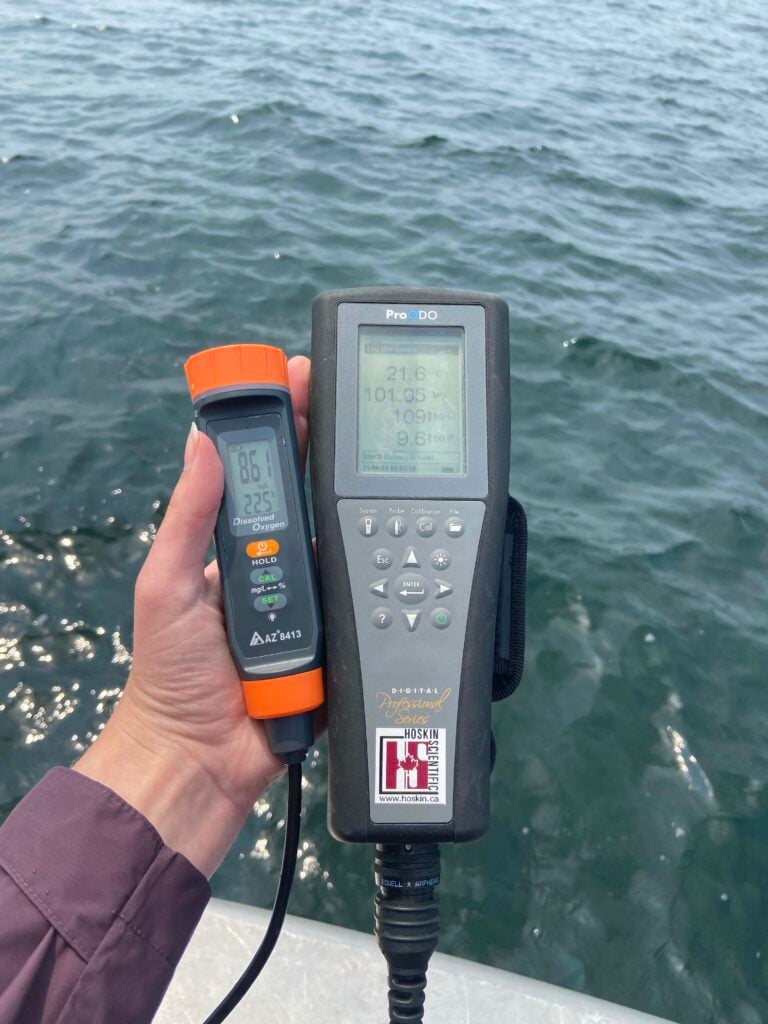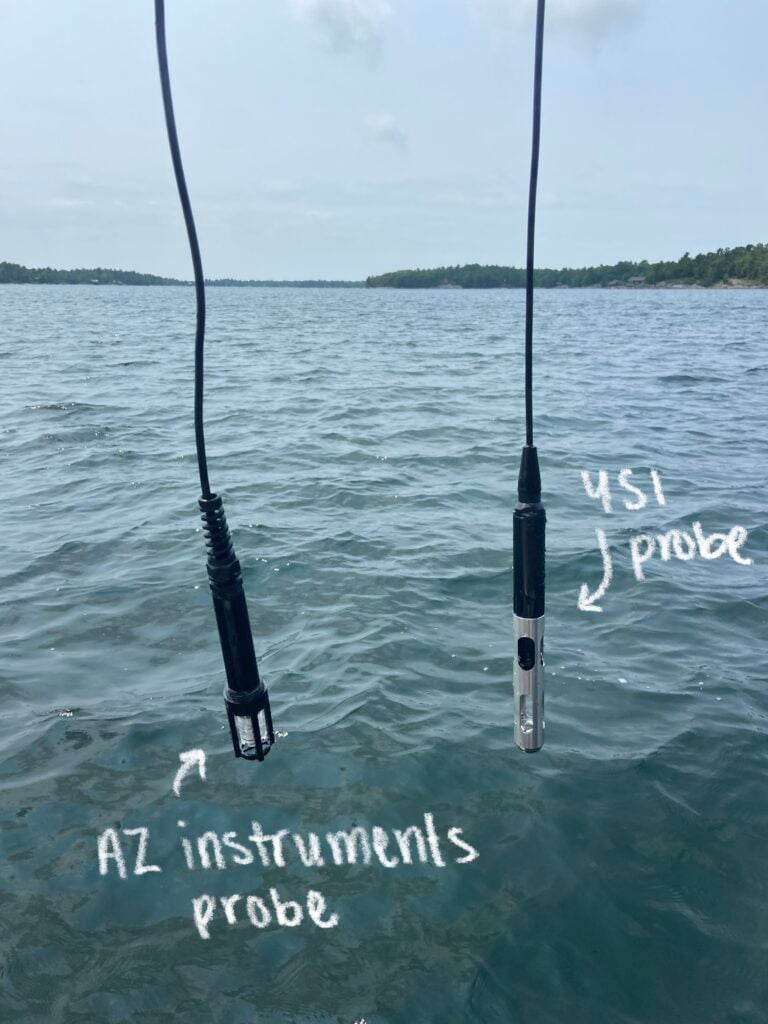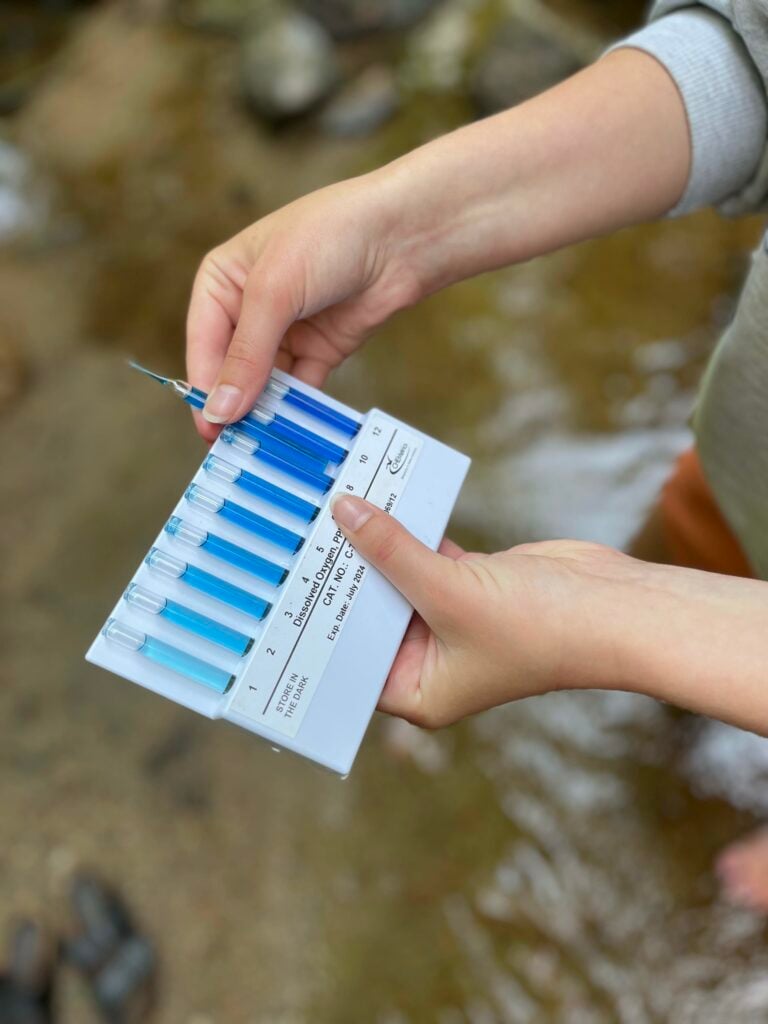Do you do DO? Testing a new dissolved oxygen testing tool
Always experimenting
Here at Water Rangers, we are always trying to find the best equipment that is user friendly and accurate. Recently, we’ve been comparing a new dissolved oxygen (DO) sensor from AZ Instruments to the more commonly used YSI meter. Both meters have an attached probe that can take dissolved oxygen measurements from various depths.

About dissolved oxygen
Dissolved oxygen is the amount of oxygen in water. It’s what fish and other organisms breath! Readings are helpful for monitoring for healthy waterways as pollution and algal bloom monitoring can cause lower than average oxygen levels (for example, during a sewage overflow or algal bloom, oxygen readings can read 0 or 1mg/L leading to fish dying). Fish species require varying amounts of dissolved oxygen.
Water Rangers testing method
Our testkits are equipped with the CHEMetrics Colorimetric Analysis kit. These easy to use tests siphon water into an ampoule, which then changes colour to indicate the amount of dissolved oxygen. While a probe will give you more fine-grained results, they are not as user-friendly, and require calibration more frequently.
Our current dissolved oxygen tests have been compared to professional probes with very good results. It was determined that the dissolved oxygen kits were very accurate and comparable to the results obtained from a YSI probe. To read more about the study by Carleton University continue here.
We recommend this method for most water testers as ensuring a dissolved oxygen probe is properly calibrated can be difficult!

Why use a dissolved oxygen probe?
Sampling at different depths ensures that we know when algal blooms are depleting oxygen levels which may result in fish kills. Probes are also more precise than a colorimetric test, so long as it’s calibrated properly. This study was done to determine if the AZ meter is a user-friendly and accurate probe for water quality monitoring.
Our findings
We used our dissolved oxygen testkit as a control group for the readings obtained from both the AZ meter and the YSI. The results were surprising! Each measurement was taken 30 cm below the surface. Our findings from the first test:
AZ probe: 6.8 mg/L
YSI probe: 10.2 mg/L
CHEMetrics test: 8 mg/L
There was a huge difference in dissolved oxygen readings suggesting that the probes were in need of calibration! Likewise, the temperature readings were off by exactly one. With the YSI reading 23.1℃ and the AZ probe reading 22.1℃.
The YSI probe used must be calibrated by a trained technician, who was not present at the time. The AZ probe is easier to calibrate and can be done within three seconds after the CAL button is pressed. Calibration, however, can be confusing for folks who are not familiar with dissolved oxygen probes. We will be experimenting more with the AZ probe to determine its usability over time.
Conclusions

Overall, the AZ probe is easier to calibrate than older models of the YSI. The YSI has a faster startup time, as the AZ probe requires 2-5 minutes to saturate in the air before use. Both require the replacement of an electrolyte solution about every 6 months. The YSI stays charged for 450 hours, whereas the AZ probe only stays charged for 60 hours.
The CHEmetrics test is a useful tool for providing baseline data about water quality. It doesn’t require calibration and is great for folks who don’t have a background in water testing, which is beneficial for educators.
The AZ instruments probe could be perfect for groups interested in using their data for more advanced research projects. A dissolved oxygen meter provides more insight into the water body as a whole. Collecting data from different depths is important for research on fish health and benthic organisms. It’s simple design and easy calibration make it more affordable than the YSI. However, until we’ve done a full comparison, we’re not endorsing this meter.
Next steps
We’re still conducting tests on this new meter to see if we should include it in our store for more advanced testing, so if you are interested in a dissolved oxygen meter please reach out to Emma at [email protected].
Do you want to start water quality testing, but you don’t have the tools to do so? Visit our store here!